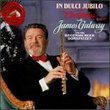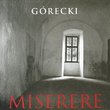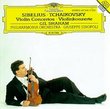| All Artists: Johann Sebastian Bach, Elaine Comparone Title: Bach with Pluck! Members Wishing: 0 Total Copies: 0 Label: Essay Release Date: 1/28/1994 Genre: Classical Styles: Chamber Music, Historical Periods, Baroque (c.1600-1750), Classical (c.1770-1830), Instruments, Keyboard Number of Discs: 1 SwapaCD Credits: 1 UPC: 090998102329 |
Search - Johann Sebastian Bach, Elaine Comparone :: Bach with Pluck!
 | Johann Sebastian Bach, Elaine Comparone Bach with Pluck! Genre: Classical
|
CD DetailsSimilarly Requested CDs
|
CD ReviewsJoyous and sprightly, great sound, definitely worth having Bradley P. Lehman | Dayton, VA USA | 02/27/2001 (4 out of 5 stars) "Bach's "trio sonatas" for a single player are marvelous music: three lines for hands and feet, intertwined beautifully. The linear independence makes them notably difficult to play. There are of course many fine recordings on organ. Offhand I can also think of at least four people who play these on pedal harpsichord. (Somebody, please run to record Elizabeth Farr in these!)But we are dealing here with arrangements for more than one player. Bach himself gave an example of this technique by setting one of these movements for violin, flute, and harpsichord in the Triple Concerto. He gave an even wilder example of transcription in the Art of Fugue, recasting a three-voiced fugue into a cubistic spectacle for two players. So, there is precedent for turning his trios into ensemble work. And vice versa: one of his sonatas for viola da gamba and harpsichord also exists in a version for two flutes, and in a version (by a student) arranged for organ.At least three ensembles (Aulos, Musica Pacifica, and King's Consort) have recorded chamber versions of these trio sonatas, to good effect. The music works well in its new tonal colors: violins, oboes, recorders, cello, etc. Everybody seems more conservative in arrangement than Bach himself was: he didn't seem to mind adding new parts or breaking up the existing lines of his own music. (Everybody but Webern and Schoenberg...but we digress.)And this brings us to "Bach with Pluck." Comparone and Bogdanovich play these on guitar and harpsichord. Bogdanovich takes one of the existing lines on guitar and applies a nice range of tonal color to it. Comparone's left hand plays the former pedal part on buff stop. Her right hand takes the other manual line, and jumps back and forth between that buff-stopped manual and a normal manual. In these choices she isolates phrases for musical effect. For a fairly conservative arrangement this works nicely.The sound (by Christopher Greenleaf) is excellent, and the stereo separation helps to bring out the independence of the lines. The performances are infectious, crisp, and clear. The blend of the two instruments is terrific: enough homogeneity to be unified, and enough heterogeneity to be interesting. The color is changing all the time due to the performers' inventiveness and Bach's crossing of the lines. Wonderful stuff. This is a disc to enjoy many times; I've done so for more than seven years.Why then do I give this only four stars instead of five? Only because of the direct competition they face among plucked-string transcriptions! There is a new recording of these sonatas played on two Lautenwerke (gut-strung harpsichords), Lyrichord 8045, played by Shawn Leopard and John Paul. And there is also MusicMasters 67182 with Eliot Fisk and Albert Fuller, guitar and harpsichord. All three disks are excellent. As here with Bogdanovich/Comparone, the plucked sound and stereo separation of Leopard/Paul and Fisk/Fuller bring out Bach's lines very well. With L/P on gut strings, all the notes decay quickly; with F/F on metal strings they are more sustained (no buff stop). How does one make a choice among these three similar options, other than a tonal preference? I think it has to come down to the performances: which one most engages both the mind and the heart? For me it's Fisk/Fuller. Their rhythm has a graceful strut to it, a flexibility as the phrases breathe naturally, where L/P and B/C are more strict (motorically unyielding at times). F/F are not as concerned with being exactly together as L/P and B/C; this casualness makes it seem more like two friends just having a great time together than preparing a perfect product. This grit, this sense of improvisatory conversation, makes it all seem more real and spontaneous than the disembodied squeaky-clean B/C and L/P. L/P are fine and fluent, but everything ends up sounding too much the same. B/C give more tonal variety than F/F...but, like L/P, they seem to forget that it is *irregularity* that gets a pearl started. So, it might seem like a paradox, but if Comparone and Bogdanovich were a little sloppier with their details I might give them all five stars! I'd rather "see the brush strokes" a bit, to get more sense of the music's physicality and gesture. The music is so rationally constructed that it needs a slightly irrational approach to make it feel human. Bogdanovich and Comparone (and L/P) are too perfect, too predictable, too well prepared: I get the sense of the music being assembled as a Platonic model rather than just happening as it goes along. Fisk and Fuller show the difference it makes to be more earthy.The transpositions also bother me, just a little. F/F manage to play all these sonatas in the original keys. So do L/P, though their tuning is at A=392, down a whole step from modern pitch. This gives an attractive richness to their tone, but everything seems so dark. B/C transpose five of the six sonatas up a fourth or a major third, playing from a modern flute arrangement. Why? To me this arbitrary choice makes these pieces too bright yet bland: particularly in the first two sonatas I miss the feeling of flats.To sum up: "Bach with Pluck" is outstanding, yet it could be even better if it were looser. But if you've bothered to read this far, you will enjoy it. (Of course, if you can afford more than one, you'll want all of these recordings!)" Sweet! Bob Brill | Sedona, AZ United States | 12/23/2002 (4 out of 5 stars) "I dove right after this album after hearing 5 minutes of it on the radio. I wasn't disappointed. How sweet the sound. I'm not at all a harpsichord enthusiast - and, yes, the album has the general tone of one - but the guitar adds what was always missing from the early keyboards, warmth! Harpsichord always seems to me of a very mental energy. Probably makes it good to study to. Guitar, however, is for the Heart - even more so poised against these tinnier sonorities. The blend is superb. An even more perfect Bach! [Remember "Switched-on Bach", the Swingle Singers, the authentic instrument movement.] I'm surprised that these [the #2 of this series included] are the only harpsichord/guitar recordings of Bach. Google.com didn't find one CD result to . By the way, the only jangling cut for me on this album was the 1st." A fabulous display of creativity without going overboard... Bob Brill | 01/08/2004 (5 out of 5 stars) "Oh! This is absolutely awe-inspiring! I just loved the mix of guitar (lute) and harpsichord. It really brings Bach's music alive in a completely different way. In the day of horrible improvisation on famous works, this is really a treat. Bach would be most pleased by this work. Buy this! It is just wonderful and you will become so attached to it. I listen to it all the time!"
|

 Track Listings (18) - Disc #1
Track Listings (18) - Disc #1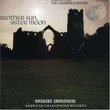

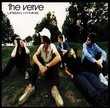
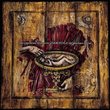
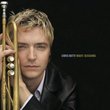
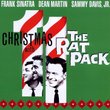
![Across The Universe [Deluxe Edition]](https://nationalbookswap.com/cd//m/51/1251/1241251.jpg)
